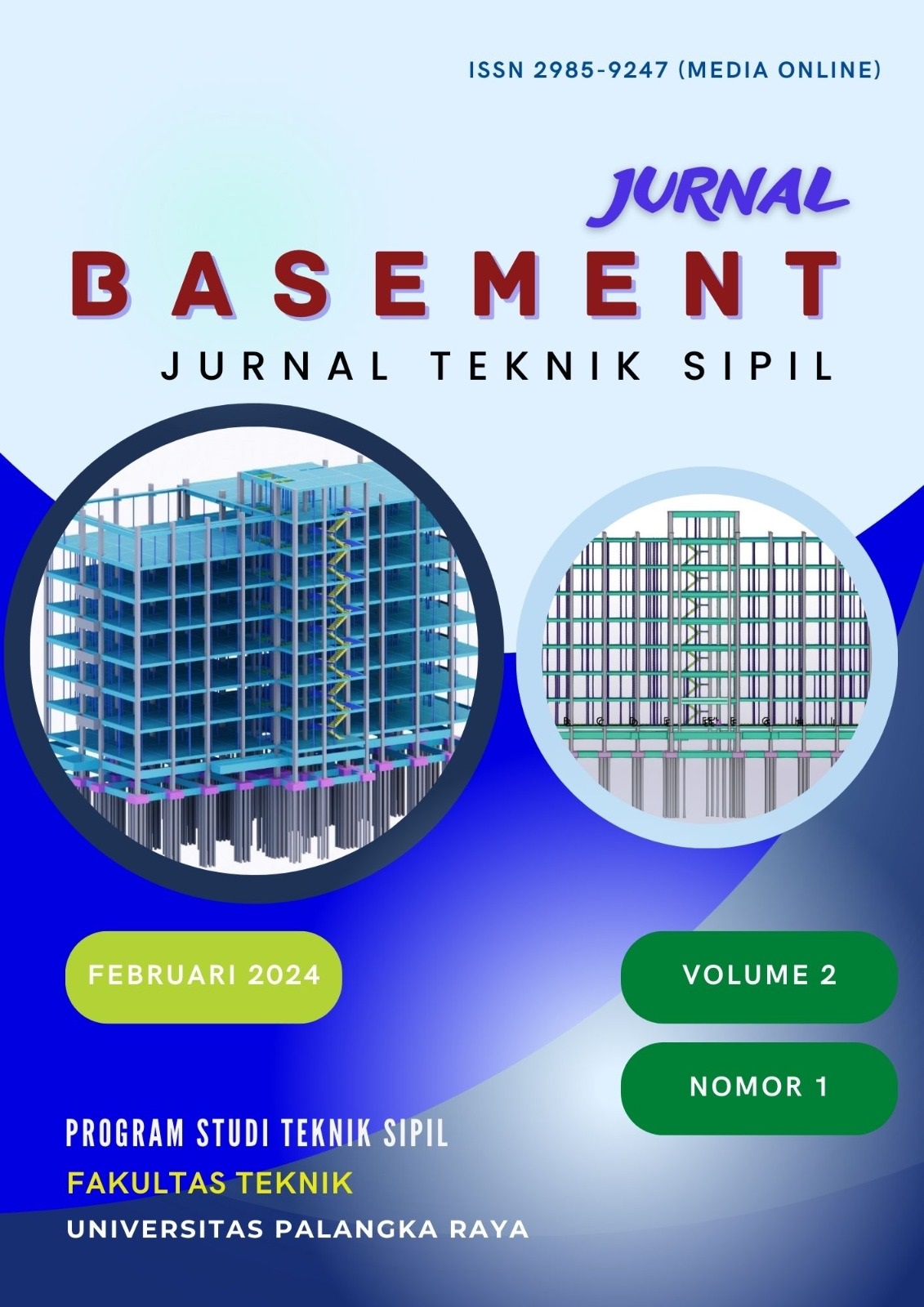Efektivitas Belok Kiri Langsung Pada Simpang Yang Dilengkapi Traffic Signal Di Kota Palangka Raya (Studi Kasus Persimpangan Jalan G. Obos, Jalan Willem A. Samad, dan Jalan M.H. Thamrin)
DOI:
https://doi.org/10.36873/basement.v2i1.10757Keywords:
LTOR (Left Turn on Red), Delay (T), Degree of Saturation (DS)Abstract
LTOR (Left Turn on Red) is the right to make a direct left turn when the traffic light shows a stop signal at an intersection equipped with APILL. In the city of Palangka Raya there are several intersections equipped with traffic signals that apply LTOR (Left Turn on Red) at the intersection. In this case study using MKJI 1997 and the VISSIM software application to analyze the Degree of Saturation (DS) and Average Delay (T), the intersection reviewed in this case study is the Jl. G. Obos - Jl. M.H. Thamrin and Jl. W.A. Samad. From the results of the analysis and observations, it shows a tendency to increase Delay (T) and Degree of Saturation (DS) when implementing LTOR (Left Turn on Red), whether the analysis uses MKJI 1997 or using the VISSIM software application, so that by implementing the alternative 2 phase signal lights shows the performance of the intersection which is better without implementing LTOR (Left Turn On Red). when the conditions for implementing 4 phase traffic signals and applying LTOR and showing the degree of saturation (D) reach the number 2 and the average delay reaches 600 pcu/hour, however when implementing 2 phase traffic signals and applying NLTOR shows the degree of saturation (D) touched 0.63 and the average delay (T) touched 11.76 pcu/hour.








